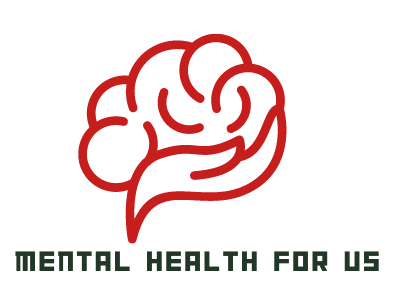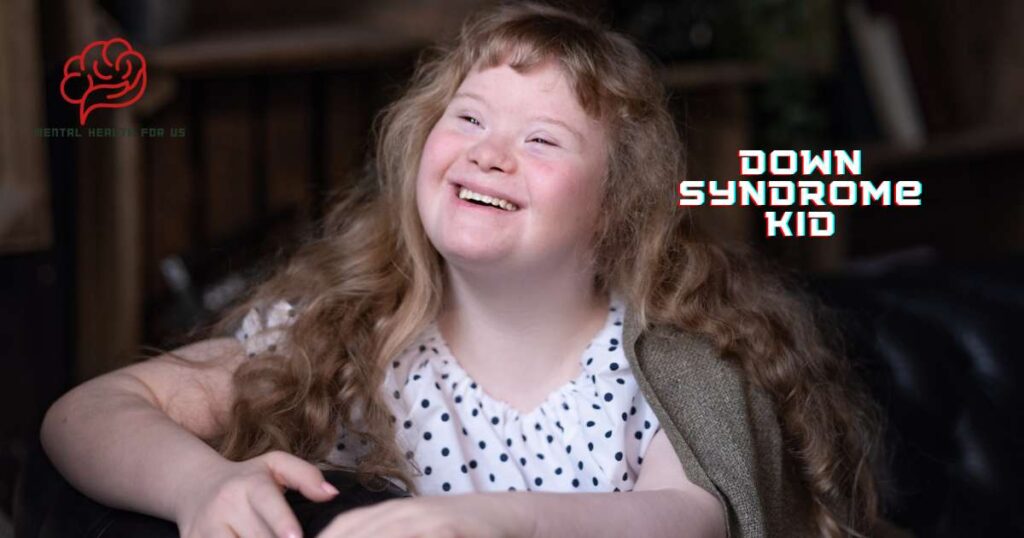Introduction
Developmental conditions like Down syndrome and autism are often linked. It’s important to remember that they’re different disorders with different challenges. Both conditions have some overlap, but they must be distinguished to properly understand and support those with them. To provide appropriate support and interventions for people with Down syndrome and autism, educators, healthcare professionals, and caregivers must understand the differences. Recognizing that people with Down syndrome and autism have unique strengths, challenges, and potential promotes inclusivity and well-being. This article intends to answer what is the difference between Down syndrome and autism.
Characteristics of Down Syndrome
An extra copy of chromosome 21 causes Down syndrome. This extra genetic material affects physical and intellectual development. A flat facial profile, slanting eyes, and a single palm crease are hallmarks of Down syndrome. Down syndrome often causes intellectual disability and delays in walking and talking. Each Down syndrome individual is unique and may exhibit varying degrees of these traits. Understanding these traits is essential to supporting and intervening for Down syndrome individuals.
–

–
Characteristics of Autism Spectrum Disorder (ASD)
Autism spectrum disorder (ASD) is a neurodevelopmental disorder that affects people in many ways. Its symptoms and behaviors range from mild to severe. The main symptoms of ASD are restricted and repetitive behavior and impaired social interaction and communication.
Social difficulties are a hallmark of ASD. Eye contact, friendships, and social cues may be difficult for ASD individuals. They may struggle to express their emotions due to limited facial expressions. Social isolation and trouble making friends can result from these issues.
In ASD, communication skills are often affected. Some people never learn to speak. Some people have a good vocabulary but struggle with social communication, like sarcasm or taking turns. ASD individuals may also use echolalia or repeat phrases.
Autism often causes restricted and repetitive behavior. They may be obsessed with certain topics and follow routines. For instance, they may follow daily routines or line up objects precisely. ASD people may struggle with routine or environment changes.
ASD sufferers often have sensory sensitivities. They may be more sensitive to sounds, sights, tastes, and textures. In noisy or bright environments, this can cause sensory overload and discomfort. However, some ASD individuals have a high pain tolerance and may not notice physical discomfort or injuries.
ASD is a spectrum disorder, so people with it have different abilities and support needs. ASD individuals may excel in math or music. Some have intellectual disabilities and need daily support.
ASD is a complex neurodevelopmental disorder with many symptoms and behaviors that affect people differently. Social interaction and communication issues and restricted and repetitive behavior are its main symptoms. Understanding and supporting ASD individuals helps them thrive and reach their potential.
Autism vs. Down Syndrome: What’s The Difference?
Many people lump autism and Down syndrome together as developmental disabilities. Despite their similarities, they are distinct disorders with different symptoms. Let’s compare autism and Down syndrome.
Understanding these conditions’ causes is essential. ASD is a neurodevelopmental disorder that causes social communication issues, restrictive and repetitive behaviors, and sensory sensitivities. Several genetic and environmental factors may cause it.
Difference in disease category
Trisomy 21, or Down syndrome, is caused by an extra copy of chromosome 21. This extra genetic material causes many physical and intellectual disabilities. It causes distinct facial features, intellectual disabilities, and developmental delays in some people. Down syndrome is chromosomal, while autism is neurodevelopmental.
Difference in symptoms
The core symptoms of autism and Down syndrome differ. Autism primarily impacts social and communication skills. Autism can make social interactions difficult, eye contact difficult, and facial expressions limited. Social cues and meaningful relationships may be difficult for them. Speech delays and social communication issues are also common.
Difference in communication
Down syndrome individuals have milder social and communication issues. They may be more social and interested in social interactions than autistic people. With speech therapy and support, many Down syndrome individuals can learn language and communicate. Whereas a child with autism can have mild to severe problems in social interaction
Difference in sensory stimulation
Sensory sensitivities are more common in autism than in Down syndrome. Autism often increases sensitivity to sounds, sights, tastes, and textures. This hypersensitivity can cause discomfort and sensory overload in some situations. Some Down syndrome individuals have sensory sensitivities, but autism is more common.
Difference in cognitions
Finally, autism and Down syndrome differ cognitively. Autism spectrum individuals can have average to exceptional cognitive abilities. However, Down syndrome causes intellectual disabilities of varying severity. Down syndrome individuals may need ongoing support and specialized education to improve cognitive and adaptive skills.
In short, autism and Down syndrome have different causes, symptoms, and traits. Social communication, repetitive behaviors, and sensory sensitivities are autism’s main symptoms. However, Down syndrome is a chromosomal disorder that causes intellectual and physical disabilities. These differences must be understood to provide autism and Down syndrome individuals with the best support and interventions for their development and well-being.
Differences in Physical Features
Autism and Down syndrome differ physically. Down syndrome individuals’ faces are easily recognizable. A flattened face, upward-slanting eyes, a small nose, and a protruding tongue are possible. Due to the extra chromosome 21, these features are often present at birth. Due to variations, not all Down syndrome individuals will have these facial features.
However, autism-related physical features are unclear. Autism is not characterized by facial features. Autistic people may look normal. Due to the wide range of autism spectrum disorders, some people with autism may have unrelated physical traits.
Physical features may differ between autism and Down syndrome, but they should not be used to diagnose. Both conditions are diagnosed by evaluating behavioral, developmental, medical, and genetic factors.
Physical appearance alone cannot diagnose autism or Down syndrome. Medical, psychological, and other specialists must work together to diagnose each condition, which is unique and complex.
People with autism or Down syndrome should not be judged by their appearance. Each person has unique strengths, abilities, and potential. Support, understanding, and inclusivity are crucial to their well-being and social success.
Differences in Facial Expressions and Mannerisms
Communication and social interaction depend on facial expressions and mannerisms. They are essential to nonverbal communication and help us express our feelings, intentions, and thoughts. Different facial expressions and mannerisms distinguish Down syndrome from autism.
Down syndrome individuals often have animated faces. Their faces show smiles, frowns, and other emotions. They may use their well-developed facial expressions to connect with others. This ability to express emotions through their face can help them connect with others.
However, autistic people may have unusual facial expressions and mannerisms. Their facial expressions may make it harder for others to understand their emotions and intentions. Some autistic people have less expressive or emotionally neutral faces. Facial expressions can affect their social interactions and make it harder to connect.
Down syndrome and autism also involve mannerisms. Individuals use mannerisms to self-soothe, communicate, and cope with their environment. Down syndrome can cause hand wringing, finger tapping, and rocking. Comfort and self-regulation can come from repetitive actions.
Mannerisms, or “stimming” behaviors, vary widely in autism. Stimming can involve hand flapping, body rocking, or repetitive vocalizations. While autistic people may exhibit these behaviors, they serve different purposes for each person. Stimming can be used to self-regulate sensory input, manage anxiety, or express oneself.
Analyzing Down syndrome and autism individuals’ facial expressions and mannerisms requires nuance. Remember that these traits cannot diagnose or distinguish the two conditions. A thorough evaluation by qualified professionals must consider behavior, development, medical, and genetic factors to make an accurate diagnosis.
In conclusion, Down syndrome individuals have expressive facial expressions and mannerisms, while autistic individuals may have atypical facial expressions and stimming. These differences show how people with these conditions communicate and interact. By understanding these differences, we can better support people with Down syndrome or autism and foster meaningful relationships.
Difference in Behaviors
Developmental conditions like Down syndrome and autism often cause repetitive behaviors. Each person’s repetitive actions are different and serve different purposes.
Repetitive behaviors help Down syndrome individuals relax and self-regulate. These behaviors may include hand wringing, finger tapping, or rocking. Repetitive actions can help Down syndrome individuals manage their emotions and environment. These behaviors are usually harmless and can help Down syndrome individuals feel stable and secure.
Autistic people call repetitive behaviors “stimming” behaviors. Hand flapping, body rocking, and repetitive vocalizations are stimming. Each person’s actions have different goals. Stimming helps some autistic people regulate sensory input and manage anxiety. It may be a form of self-expression or communication with others. Stimming behaviors can help autistic people navigate their world, so they should not be discouraged.
Repetitive behaviors in Down syndrome and autism vary in frequency and intensity. Some people do these things occasionally, while others do them often. These behaviors should be considered in the context of the individual’s development and functioning, not as a diagnostic criterion.
Additionally, environmental factors can affect Down syndrome and autism repetitive behaviors. Routine changes, sensory sensitivities, and stressors can cause repetitive behaviors. Providing a supportive environment that meets the needs and preferences of Down syndrome and autism individuals can reduce these behaviors.
Bottom line: Down syndrome and autism have complex and varied repetitive behaviors. They may be noticeable in people with these conditions, but they should be accepted. Supporting and understanding each person’s uniqueness is essential to their well-being and development.
Social Skills
Social skills are the ways we communicate and interact with others. These skills are essential for socializing, understanding social norms, and navigating social situations. Some people have natural social skills, but others may struggle due to ASD, developmental delays, or social anxiety.
Social skills are difficult for ASD people. They may have trouble reading social cues, knowing body language, and communicating appropriately. Autism spectrum disorders can also make eye contact, take turns, and understand sarcasm and humor difficult. Each autistic person is unique, and their social skills may vary. Whereas in Down syndrome social skills are not much disturbed as compared to autism
Developmentally delayed children may struggle with social skills. These delays can affect their ability to socialize, understand others, and set boundaries. Social skill delays can affect a child’s development and ability to form meaningful relationships.
It can also hinder social skill development in all ages. Social anxiety causes intense fear or anxiety in social situations, making it difficult to talk, express themselves, or participate in social activities. They may feel self-conscious, judged, embarrassed, or rejected.
Fortunately, social skills development strategies and interventions exist. People can learn and practice social skills through modeling, role-playing, and feedback. Therapists, educators, and caregivers can help with social situations and norms.
Social skills can be improved daily in addition to formal interventions. Active participation in group activities, empathy and perspective-taking, and social interactions can help develop social skills.
Difference in Communication Skill
Communication is crucial to human interaction. It lets us communicate, understand, and connect with others. Communication skills are crucial to personal and professional success, collaboration, and well-being.
Communication skills may be difficult for people with ASD or Down syndrome. With support and guidance, people with these conditions can improve their communication and social skills.
ASD often causes verbal and nonverbal communication issues. ASD individuals may have limited speech or echolalia. Some have trouble understanding figurative language, jokes, and sarcasm. They may have trouble communicating or understanding others due to these issues.
Down syndrome can also delay speech and language development. They may struggle with grammar, vocabulary, and articulation. Note that Down syndrome individuals’ communication abilities and difficulties vary. Some people have advanced language skills, while others need help.
Developmentally disabled people can improve their communication skills with many methods. Speech therapy can improve articulation, expressive and receptive language skills, and communication.
Along with formal therapy, everyday opportunities support and promote communication skills. Providing a supportive and inclusive environment, using visual aids or alternative communication methods like sign language or picture exchange systems, and encouraging social interaction and conversation can help develop effective communication skills.
Remember that communication goes beyond words. Body language, facial expressions, and gestures also influence interpersonal communication. Teaching and understanding these nonverbal cues can improve communication, especially for developmental individuals.
Communication skills require patience, understanding, and acceptance. Each person progresses differently. Support and guide them while respecting their pace and abilities. Celebrating even small wins can boost confidence and motivation.
Successful communication is essential in all areas of life. By working on these skills, people with developmental conditions can gain independence, confidence, and quality of life. They can overcome communication challenges and thrive in a world that values open, clear, and meaningful communication with support and opportunities.
Conclusion
In conclusion, ASD and Down Syndrome are neurodevelopmental disorders with different genetics and symptoms. Down Syndrome is a chromosomal disorder caused by an extra copy of chromosome 21, while autism is a complex genetic disorder influenced by genetic and environmental factors.
Down Syndrome individuals often have slanted eyes, a flat nasal bridge, and a small mouth with a protruding tongue. Autistic people rarely have these traits. Autism can have a wide range of intellectual abilities, while Down Syndrome causes mild to moderate intellectual disability.
Autism differs from Down Syndrome in social skills and communication. Autistic people may have trouble communicating, understanding social cues, and socializing. However, people with Down Syndrome are more social and enjoy interacting with others, despite communication delays.
Autism is more likely to cause repetitive behaviors, while Down Syndrome may cause ritualistic ones. A dual diagnosis of autism and Down Syndrome combines the traits and challenges of both conditions.
Diagnosis, intervention, and support require an understanding of autism and Down Syndrome differences. By recognizing these differences and genetic origins, professionals and caregivers can tailor treatments, therapies, and education to meet the needs of people with one or both of these conditions.
FAQs
What kind of syndrome is autism?
Autism is a complex neurodevelopmental disorder, not a syndrome.
What is the main cause of autism?
Autism is thought to be caused by genetic and environmental factors, however, the exact cause is unknown.
Can autism be treated?
While autism cannot be cured, various therapies and interventions can improve quality of life and functioning.







